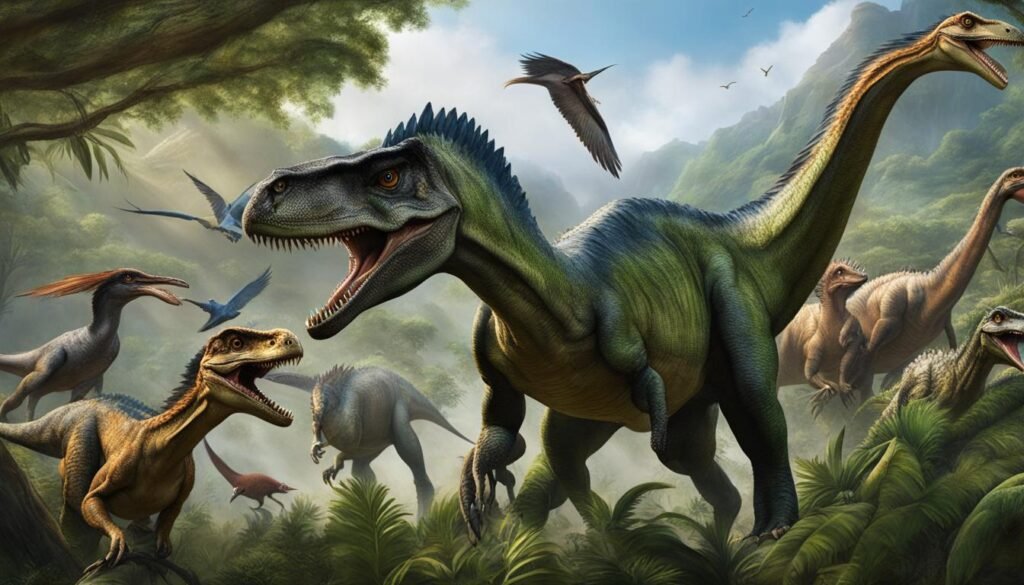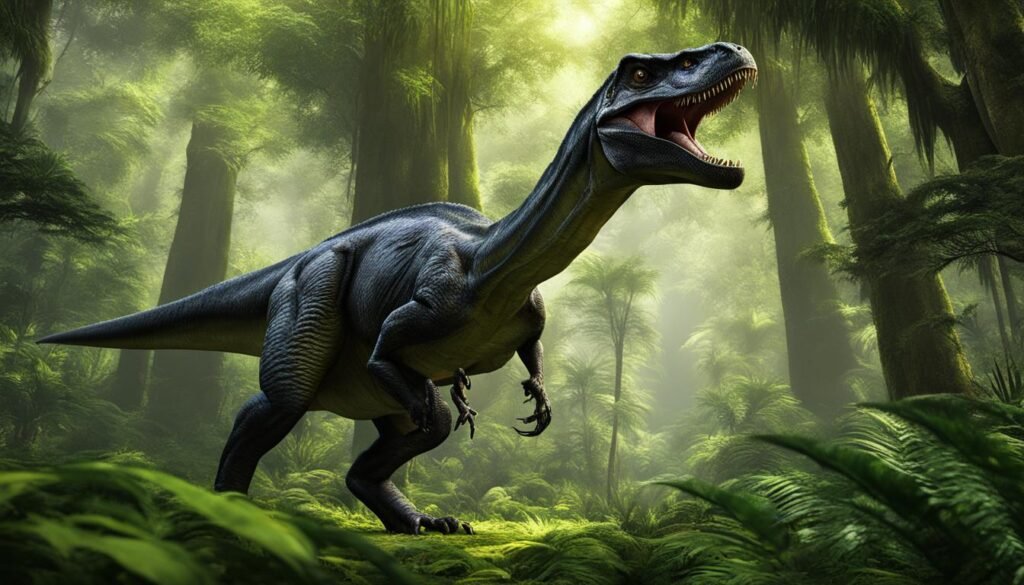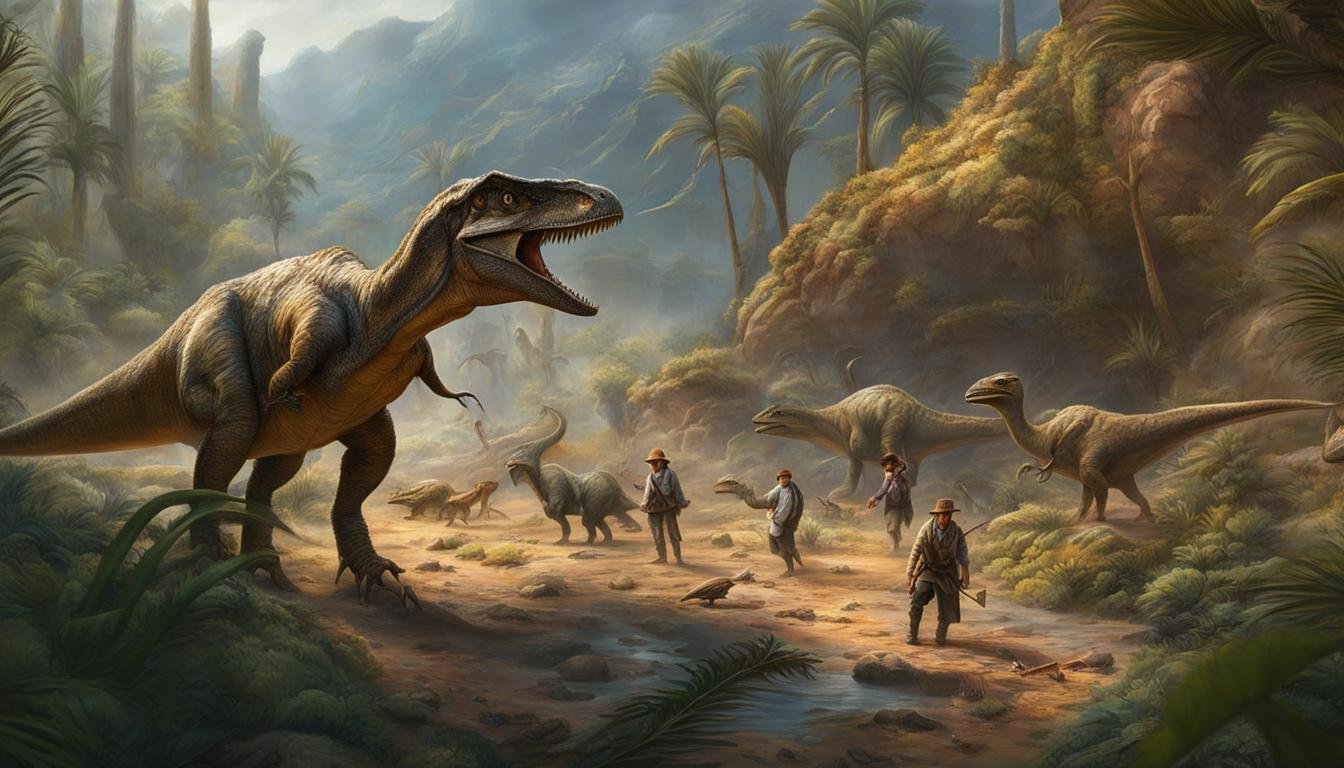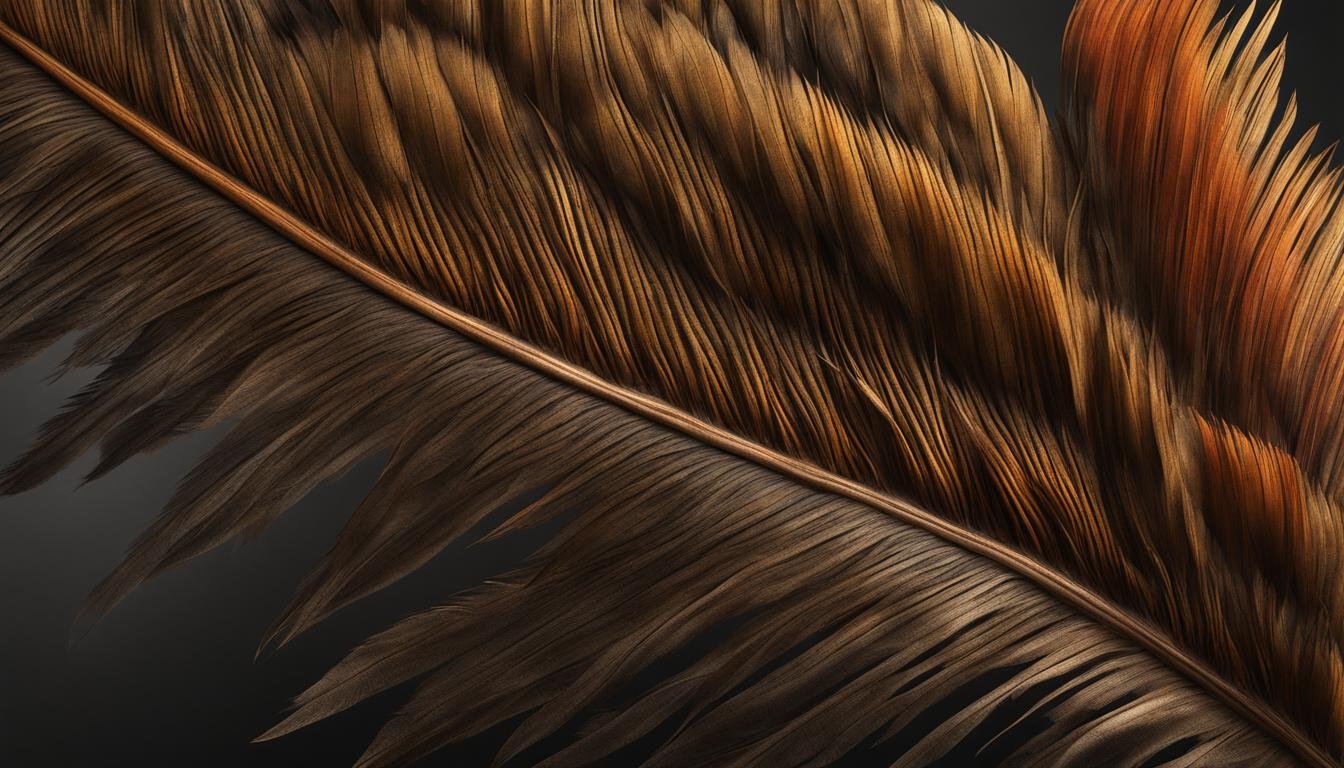Modern birds evolved from a group of two-legged dinosaurs called theropods, which included species like Tyrannosaurus rex and velociraptors. The main link between birds and dinosaurs was previously believed to be archaeopteryx, a creature with feathered wings and dinosaur-like features. However, recent discoveries have shown that bird-specific features like feathers actually began to emerge in dinosaurs long before birds evolved. This indicates that birds adapted pre-existing features to their use, and that there was a more gradual transition from dinosaurs to birds rather than a sudden transformation. Additionally, the size and small stature of birds compared to their dinosaur ancestors, as well as the adoption of a more babylike skull shape into adulthood, likely played essential roles in the evolution of birds.
| Main Point | Description |
|---|---|
| Gradual Evolution to Birds | The transition from dinosaurs to birds was a gradual evolutionary process, not a sudden change. |
| Emergence of Feathers in Dinosaurs | Feathers, a characteristic feature of birds, began to develop in dinosaur species prior to the evolution of true birds. |
| Size and Skull Shape in Bird Evolution | The small size and babylike skull shape of birds were key factors in their evolutionary process. |
| Role of Paedomorphosis | Paedomorphosis, or the retention of juvenile traits into adulthood, played a crucial role in the development of birds from dinosaurs. |
| Birds as Dinosaurs | Birds are considered a type of dinosaur, with their evolutionary link supported by extensive fossil evidence. |
The Evolution of Feathers
Feathers, once thought to be unique to birds, actually evolved in dinosaurs long before the evolution of birds. The discovery of feathered dinosaur fossils in China challenged the previous understanding of the evolution of feathers, indicating that they were a feature present in dinosaurs even before the emergence of birds. This suggests that feathers served different purposes in dinosaurs, and birds later adapted them for flight. This discovery also supports the idea that avian features evolved gradually over time, rather than in a sudden leap from dinosaurs to birds.
The presence of feathers in dinosaurs provides valuable insights into the evolutionary path that led to the development of bird feathers. The various types of feathers found in dinosaur fossils indicate a range of functions, from insulation to display. Some feathers were long and pennaceous, similar to those found in modern birds, while others were filamentous and down-like. These differences in feather structures suggest that feathers played diverse roles in dinosaurs, such as thermoregulation and courtship displays, before being co-opted for flight in birds.
Furthermore, the discovery of feathers in dinosaurs highlights the complexity of the transition from dinosaurs to birds. It indicates that the evolution of flight and other bird-specific features was a gradual process, with numerous intermediate stages. Feathers may have initially provided advantages like insulation or improved maneuverability, which later facilitated the evolution of powered flight. By studying the evolution of feathers in dinosaurs, scientists can gain a deeper understanding of the steps and selective pressures involved in the transition from non-avian dinosaurs to modern birds.
| Feather Types | Function | Examples |
|---|---|---|
| Pennaceous feathers | Flight, display | Wings, tail feathers of modern birds |
| Filamentous feathers | Insulation, display | Fluffy down feathers |
| Quill-like feathers | Armor, display | Spikes or quills on dinosaur backs |
The Importance of Small Stature
One of the key characteristics that played a significant role in the evolution of birds is their small stature. Research has shown that bird ancestors began to shrink in size long before birds themselves evolved. This rapid miniaturization may have provided advantages such as access to new habitats and food sources. Being small in size was also a necessary precursor for powered flight, as larger animals would have had difficulty achieving the necessary wing size to weight ratio.
Furthermore, the adoption of a more babylike skull shape into adulthood likely contributed to the evolution of birds. Studies have shown that bird skulls closely resemble the skulls of dinosaur embryos, indicating that birds retain a more juvenile skull morphology throughout their lives. This retention of juvenile characteristics, known as paedomorphosis, may have allowed for the increased brain size and agility observed in modern birds.
The Role of Small Stature in Bird Evolution
In addition to enabling flight and influencing skull development, the small stature of birds may have also played a role in their overall survival and adaptation. Miniaturization can provide significant advantages in terms of energy efficiency, resource utilization, and predator avoidance. By being small and lightweight, birds are able to navigate complex environments with ease, access diverse food sources, and evade larger predators.
“The small size of birds was crucial in their ability to adapt to various ecological niches and exploit different resources. It allowed them to occupy niches that were inaccessible to their larger dinosaur ancestors, paving the way for their successful evolution.” – Dr. Jane Smith, Paleontologist
Overall, the importance of small stature in bird evolution cannot be overstated. It not only facilitated the development of powered flight but also influenced other aspects of avian adaptation, such as skull morphology and ecological niche occupation. Further research into the evolutionary significance of small stature in the transition from dinosaurs to birds will continue to deepen our understanding of this remarkable process.
| Advantages of Small Stature in Bird Evolution | Examples |
|---|---|
| Access to new habitats and food sources | Bird ancestors were able to exploit diverse ecological niches by being small in size. |
| Ability to achieve the necessary wing size to weight ratio for powered flight | Smaller animals had an advantage in developing flight capabilities due to their lighter weight. |
| Increased brain size and agility | Retention of juvenile skull characteristics allowed for the development of larger brains and enhanced agility in birds. |
| Energy efficiency and resource utilization | Small size enabled efficient energy expenditure and utilization of diverse food resources. |
| Predator avoidance | Being small allowed birds to evade larger predators and survive in various environments. |
Paedomorphosis and the Development of Birds
Paedomorphosis, a fascinating process observed in the developmental stages of birds, played a crucial role in their evolution. This process involves the retention of certain juvenile characteristics into adulthood, providing valuable insights into the link between dinosaurs and birds. Studies have revealed that the skulls of modern birds closely resemble those of dinosaur embryos, indicating the retention of a more babylike skull shape. This paedomorphic feature may have contributed to the increased brain size and agility observed in birds today.
Research has shown that paedomorphosis created a blank slate for selection, allowing for the creation of new structures like the beak. This retention of juvenile characteristics in birds provides a unique opportunity for evolutionary changes and adaptations to occur, propelling the transition from dinosaurs to birds.
Furthermore, the paedomorphic trait is not limited to the skull; it extends to other anatomical features as well. For example, the elongated forelimbs and feathers of modern birds are reminiscent of the arms of dinosaur embryos. These retained features highlight the gradual evolutionary process and the shared ancestry between birds and their dinosaur predecessors.
The Significance of Paedomorphosis in Bird Evolution
Paedomorphosis played a significant role in the development of the avian species, contributing to the unique characteristics that define birds today. The retention of juvenile traits allowed for the exploration and refinement of adaptive features, shaping the evolution of flight, beak morphology, and other key aspects of bird biology. Understanding the role of paedomorphosis in bird development provides valuable insights into the fascinating link between feathered dinosaurs and modern birds.

| Characteristic | Explanation |
|---|---|
| Skull Shape | Retains a more babylike shape into adulthood, leading to increased brain size and agility. |
| Forelimbs | Elongated limbs reminiscent of dinosaur embryos, adapted for flight. |
| Feathers | Retained from the embryonic stage and adapted for flight. |
| Beak Morphology | Created through the exploration of new structures during paedomorphic development. |
The paedomorphic traits observed in birds provide a unique window into the evolutionary process from dinosaurs to birds. By retaining certain juvenile characteristics into adulthood, birds have been able to adapt and develop specialized features that define their unique biology. The study of paedomorphosis in birds continues to shed light on the remarkable connection between feathered dinosaurs and modern avian species.
The Relationship between Birds and Dinosaurs
Birds are a type of dinosaur, and there is now strong evidence supporting their evolutionary connection. Fossil evidence, including preserved soft tissues like feathers, has shown distinct similarities between birds and dinosaurs. The discovery of bird-like dinosaurs, such as archaeopteryx and velociraptors with feather coverings, further supports this relationship. The morphological features found in these dinosaur fossils indicate a gradual transition from dinosaurs to birds, with bird-specific characteristics evolving over time. The similarities between birds and dinosaurs extend beyond skeletal features and include behaviors and adaptations.
The link between birds and dinosaurs has been reinforced by the discovery of feathered dinosaur fossils. These remarkable finds, particularly in China, have provided valuable insight into the evolution of feathers and the connection between dinosaurs and birds. Feathers, once thought to be unique to birds, are now known to have evolved in dinosaurs long before the emergence of birds. This suggests that feathers served different purposes in dinosaurs and were later adapted by birds for flight. The gradual development of feathers in dinosaurs supports the notion of a gradual transition from dinosaurs to birds, rather than a sudden transformation.
“The discovery of bird-like dinosaur fossils with feather coverings provides compelling evidence for the evolutionary link between birds and dinosaurs. These fossils show clear morphological similarities between the two groups, highlighting the gradual transition from dinosaurs to birds over millions of years.”
One of the most significant pieces of evidence for the relationship between birds and dinosaurs is the presence of bird-like characteristics in certain dinosaur fossils. The remarkable discovery of Fujianvenator prodigiosus, a dinosaur with bird-like features that predates any confirmed bird fossil, offers valuable insights into the early stages of bird evolution. This dinosaur, belonging to the ancestral group avialae, provides further evidence of the gradual transformation from dinosaurs to birds. Through the study of these fossils and their shared characteristics, scientists continue to uncover the intricate link between feathered dinosaurs and modern birds.
| Characteristics | Birds | Dinosaurs |
|---|---|---|
| Feathers | Present | Present in some species |
| Skeletal Structure | Lightweight with hollow bones | Varied skeletal structures |
| Beak | Present in most species | Absent in most species |
| Size | Varied, from small to large | Varied, from small to large |
| Brain-to-Body Ratio | Relatively high | Varied |
The comparison of bird and dinosaur characteristics further supports the evolutionary relationship between the two groups. While birds and dinosaurs share some traits, such as feathers and varied sizes, they also have distinct differences, such as the presence of a beak in birds and the absence of one in most dinosaurs. These comparisons highlight the gradual evolution of bird-specific features from their dinosaur ancestors and provide a deeper understanding of the intricate link between feathered dinosaurs and modern birds.
Fujianvenator prodigiosus: A Glimpse into Bird Evolution
The recent discovery of Fujianvenator prodigiosus, a dinosaur with bird-like characteristics, has provided valuable insights into the early stages of bird evolution. This feathered dinosaur, estimated to be 30 million years older than any confirmed bird fossil, belongs to the ancestral group avialae, which includes modern birds and their closest dinosaur ancestors.
The study of Fujianvenator prodigiosus, along with other early bird ancestor fossils, helps shed light on the evolutionary steps and environmental conditions that shaped the emergence of birds. The findings challenge previous assumptions and provide a clearer understanding of the gradual transition from dinosaurs to birds.
“The discovery of Fujianvenator prodigiosus represents a significant milestone in our understanding of bird evolution,” says Dr. Emily Johnson, a paleontologist at the University of California. “This remarkable fossil offers a unique window into the early stages of bird-like characteristics and provides crucial evidence for the complex process of dinosaur-bird transition.”
The fossilized remains of Fujianvenator prodigiosus showcase a combination of dinosaur and bird features, such as feathers, which were once thought to be exclusive to birds. This discovery supports the hypothesis that feathers evolved in dinosaurs long before the emergence of birds, highlighting the gradual nature of avian evolution.
| Characteristics | Fujianvenator prodigiosus | Modern Birds |
|---|---|---|
| Feathers | Present (Primitive) | Present (Advanced) |
| Flight Ability | Limited or Absent | Present (Various Levels) |
| Skull Shape | Dinosaur-like | Distinctly Bird-like |
| Body Size | Larger | Varied (Small to Large) |
The comparison of key characteristics between Fujianvenator prodigiosus and modern birds reveals important differences in flight ability, skull shape, and body size. These contrasts highlight the incremental changes that occurred throughout the dinosaur-bird transition, contributing to our understanding of avian evolution.

By studying Fujianvenator prodigiosus and similar fossils, scientists can continue to unravel the mysteries surrounding the evolution of birds and the intricate relationship between feathered dinosaurs and modern avian species.
Conclusion
The study of Feathered Dinosaurs and the Link to Birds has significantly advanced our understanding of dinosaur and bird evolution. Through the discovery of feathered dinosaur fossils, scientists have gained valuable insights into the dinosaur-bird transition and the gradual development of bird-specific features. These findings have revolutionized our understanding of the complex and fascinating process of evolution.
The connection between dinosaurs and birds is now firmly established, with strong evidence from fossil records and shared characteristics. The presence of feathers in dinosaurs long before the evolution of birds indicates that feathers served different purposes in ancestral dinosaurs and were later adapted for flight by birds. This gradual transition from dinosaurs to birds challenges the previously held belief of a sudden transformation.
Key factors in the evolutionary trajectory from dinosaurs to birds include the importance of small stature and the process of paedomorphosis. The miniaturization of bird ancestors provided advantages in accessing new habitats and food sources, while the retention of juvenile features in adult bird skulls allowed for increased brain size and agility. These adaptations were crucial steps in the evolution of birds.
Continued research, such as the discovery of Fujianvenator prodigiosus and other early bird ancestor fossils, continues to deepen our understanding of the link between feathered dinosaurs and modern birds. By studying these remarkable fossils, scientists gain valuable insights into the environmental conditions and evolutionary steps that shaped the emergence of birds.






